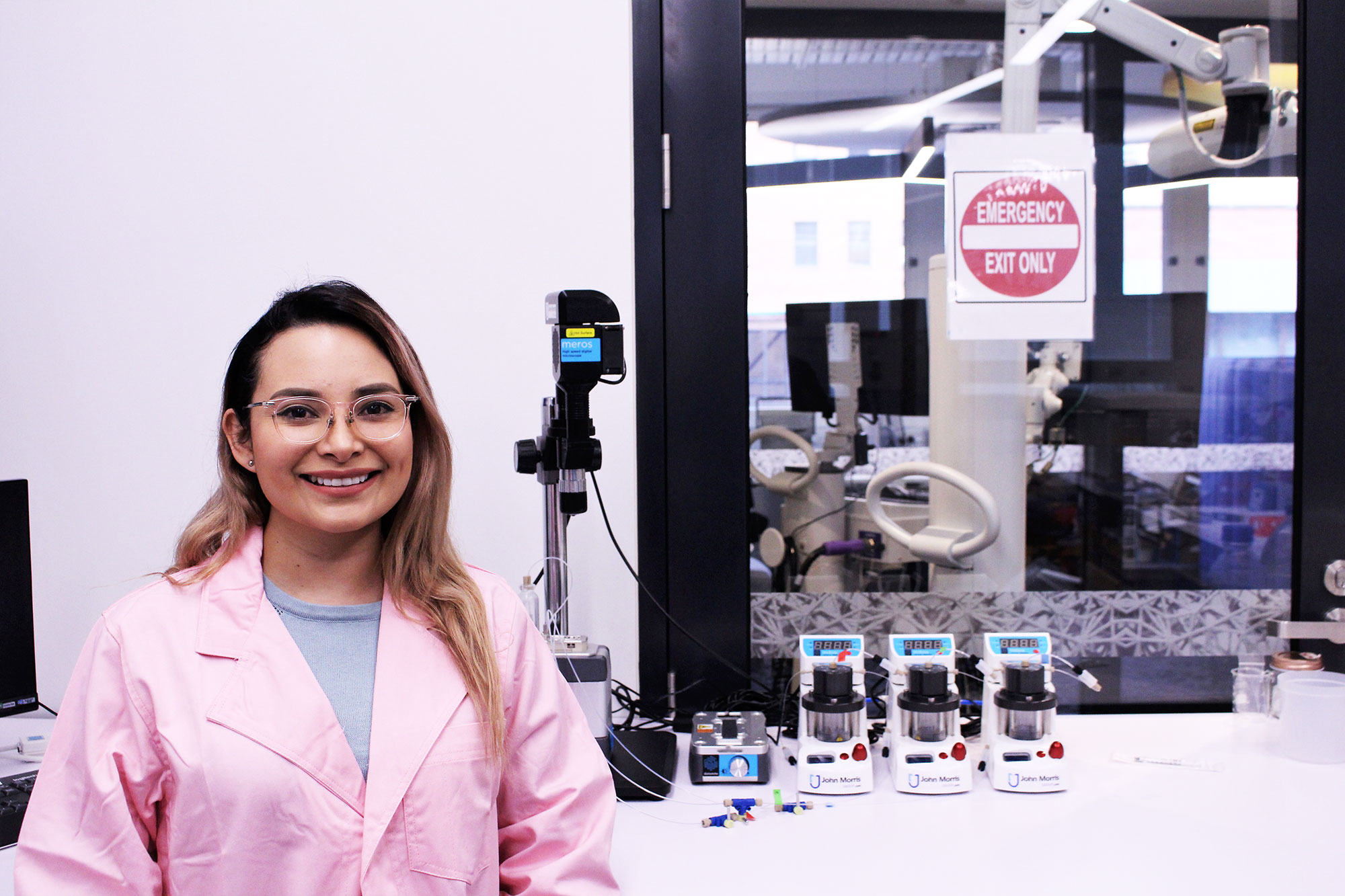News
3D printing bone tissue
Jun 28 2022
ACES Swinburne University of Technology PhD candidate and biomedical engineer Lilith Caballero Aguilar, has been busy undertaking research into 3D printing of drug delivery systems with ACES since 2016. We recently caught up with her at St Vincent’s Hospital Melbourne’s BioFab3D facility for a chat.

What is your research area?
Specifically, I work on developing effective drug delivery systems. My project is about finding a way to deliver bioactive factors to specific tissues to assist in the repair of those tissues.
The first phase of this project was to develop hydrogel structures able to slowly deliver biofactors. Now we’re up to testing these structures to see if they can improve damaged cartilage. We take the hydrogel structures containing the growth factors and mix them with the human fat (adipose) cells – the basis of an ‘ink’. In the laboratory, the mixture is grown in media, which is refreshed regularly, and the cells are provided with cues, through the slow release of the biofactors by diffusion through the structure to enable them to develop into cartilage tissue over approximately four weeks.
The ‘ink’ is delivered to the patient with the Biopen, a handheld printing tool surgeons can use in theatre. Once this project is complete, the next stage of the plan is to test the structures to see if they are suitable candidates to assist in muscle cell repair and regeneration.
Who have you been working with on this project?
I’ve been collaborating here at St Vincent’s Hospital Melbourne with Prof Peter Choong’s research group, mainly working with Dr Claudia di Bella, an orthopaedic surgeon, and Dr Carmine Onofrillo and Dr. Serena Duchi.
What is your background?
I did my undergraduate studies back in Mexico in physics engineering and then did my masters in biomedical engineering at KULeuven in Belgium. I’m currently doing my PhD at Swinburne University under the supervision of ACES CI Prof Simon Moulton.
What does a usual day look like for you here?
As a ritual, I like to prepare my coffee and then check my emails. I usually read something scientific while the caffeine is kicking in. I then see what the experimental plan is for the day and then go into the labs. At the end of the day, I review how things went and the outcomes for the day – as well as do some data analysis.
What’s your favourite aspect of your work?
The coffee and cake [laughs].
Honestly, all of the conversations and discussions we have here amongst the many multidisciplinary professions – we have medical students, engineers, microbiologists, biologists – allows me to view my research from so many different perspectives. Even just chatting during lunch. I’m an engineer but now I’m able to relate to many other areas.
What do you hope ultimately comes out of your research?
I really hope I can develop some fundamental knowledge that can be translated, in a relatively short time frame, into making a difference to patient outcomes. That would be very valuable and very satisfying personally.
Thanks for your time.
You can read more about Lilith’s work in an article published by SUT here.













